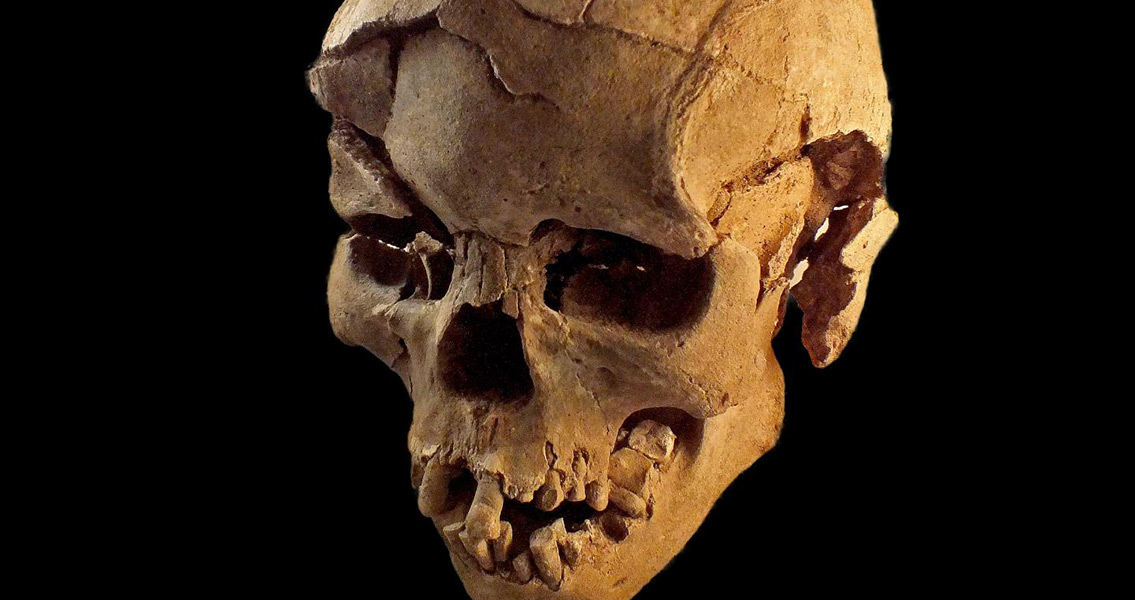<![CDATA[Exactly when humans first went to war is a deeply controversial issue. On top of debates between historians over the chronology and definitions of ancient conflicts are questions connected to human nature itself. If conflict between groups has always been a part our existence, traceable to the earliest signs of humanity, then it could be argued that organised violence is lodged deep into the evolutionary development of our species. On the other hand, if it came later, then conflict can be viewed as a symptom of another factor: the development of hierarchies or ideas of ownership for example. The shocking discovery in Kenya of a group of hunter gatherers massacred 10,000 years ago has the potential to push back the origins of warfare, and add flames to the debate over how inherent conflict is to human evolution. Researchers from Cambridge University's Leverhulme Centre for Human Evolutionary Studies (LCHES) discovered the fossilised bones of the hunter-gatherers in Nataruk, 30km west of Lake Turkana, Kenya. Among the partial remains of 27 individuals were at least eight women and six children. The authors of the study, published in the journal Nature, believe the site provides the earliest scientifically dated evidence of inter-group violence among hunter-gatherer communities - the origins of warfare. Excavations at Nataruk started in 2012, after which scientists performed radio carbon dating on the skeletal remains, as well on samples of shell and sediments from the same site. They concluded that the brutal event which led to these people's deaths took place between 9,500 and 10,500 years go, right at the start of the Holocene epoch. Twelve of the skeletons were discovered in a reasonably complete state. All of them bore the marks of horrifying treatment. Ten demonstrated clear evidence of having suffered a violent death, including extreme blunt-force trauma to crania and cheekbones, broken hands, knees and ribs, and arrow lesions to the neck. Two males had stone projectile tips lodged into their skeletons, one in the thorax, the other in the skull. The bodies had not been buried. Four were found in positions indicating their hands had been bound, including a woman in the later stages of pregnancy. At least five skeletons showed evidence of 'sharp force trauma', in some cases suggestive of arrow wounds. "The deaths at Nataruk are testimony to the antiquity of inter-group violence and war," said Dr Marta Mirazon Lahr, from Cambridge's LCHES, who directs the IN-AFRICA Project and led the Nataruk study. Why such a bloody massacre took place is unclear. What is known is that the area around what is now Nataruk was home to a substantial hunter-gatherer population. Likely covered in marshland and wooded corridors, the lagoon side location may have been a highly coveted place, providing easy access to drinking water and fish. Dr. Mirazon Lahr suggests that competition for this idyllic location could have led to the massacre. "The Nataruk massacre may have resulted from an attempt to seize resources - territory, women, children, food stored in pots - whose value was similar to those of later food-producing agricultural societies, among whom violent attacks on settlements became part of life", she said in a press release. "This would extend the history of the same underlying socio-economic conditions that characterise other instances of early warfare: a more settled, materially richer way of life. However, Nataruk may simply be evidence of a standard antagonistic response to an encounter between two social groups at that time." For more information: www.nature.com Image courtesy of Marta Mirazon Lahr]]>
Earliest Massacre in History Discovered
